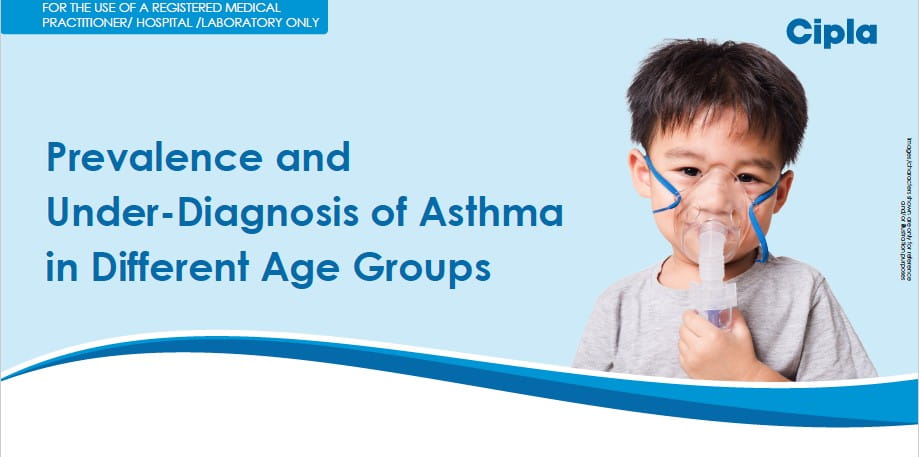EAACI 2024: Pediatric Wheezing Phenotypes Remission and Journey from Childhood to Adulthood
Speaker: Umit M. Sahiner
Pediatric wheezing phenotypes are complex and often persist into adulthood as part of the broader syndrome of asthma, which encompasses various phenotypes and endotypes described differently across cohorts. Wheezing is common in children due to factors like small airway diameter, high airway resistance, and increased susceptibility to respiratory infections. Asthma remission, whether clinical or complete, is common in childhood but may require ongoing treatment in adulthood, particularly with biologicals. Rates of remission vary depending on definitions and follow-up duration, with clinical remission more common than pathophysiological remission, especially in children. However, remission does not equate to a cure, as asthma often recurs later in life, with those experiencing remission at increased risk of accelerated lung decline and persistent airflow limitation, emphasizing the importance of ongoing lung function monitoring in these individuals.
The Tucson Cohort, initiated in the 1980s, identified four wheezing phenotypes: Never wheezers, early transient wheezers, late-onset wheezers, and persistent wheezers, each associated with distinct risk factors. Similar phenotypes were observed in the Avon Longitudinal Study of Parents and Children (ALSPAC) cohorts, with persistent wheezers showing the highest risk for asthma development and respiratory dysfunction. The PIAMA cohort identified additional risk factors such as parental allergy and smoking exposure during pregnancy. The BAMSE cohort confirmed these phenotypes and found that all asthma groups were associated with decreased lung function, with late-onset wheezers experiencing the most significant decline. A pooled data analysis by the Kustovic group across multiple cohorts highlighted the persistence and variability of wheezing phenotypes, complicating the assessment of asthma development over time.
In two UK birth cohorts, researchers identified five clusters linked to early-life risk factors and asthma outcomes at age 10. Three clusters appeared in infancy: transient non-atopic, persistent non-atopic, and atopic wheezing. Two emerged in early childhood: non-atopic wheeze and atopic wheeze. Auto P was a predominant risk factor for wheezing persistence, particularly in clusters three and five. Each group had unique risk factors. Cluster one had low atopy frequency and a 6.8% asthma prevalence. Cluster two had a 63% asthma prevalence, with moderate atopy rates. Cluster five had an 80% asthma prevalence. Atopic status played a crucial role in subgroup definitions.
Several clinical indexes have been developed to predict asthma, including the original Asthma Predictive Index (API) from 2000, later modified in 2013, and the AdamAPI from 2015, which boasts a higher likelihood ratio but incorporates more complex biomarkers like gene expressions and volatile compounds, making it less practical for widespread use. The relationship between genes and wheezing phenotypes was largely unexplored until recently, with the first genome-wide association study conducted in 2023, identifying specific SNPs associated with different wheezing types. Notably, a novel locus on chromosome 9 was linked exclusively to early-onset persistent wheeze. Genetic studies continue to shed light on the progression of wheezing to childhood asthma. Additionally, epigenetic modifications, such as hypomethylation and microRNAs, have been investigated. In a study using data from the CAMP trial, baseline FEV1 to FVC ratio was found to predict asthma remission. Furthermore, microRNA 2215P was associated with clinical remission, potentially affecting IG-mediated muscle degradation and reducing eosinophilic inflammation in asthma.
Longitudinal studies tracking wheezing phenotypes from childhood into adulthood provide valuable insights into asthma progression. The Melbourne Asthma Study, initiated in 1964, followed participants until age 42, revealing that mild childhood wheezing often does not progress to asthma later in life. However, severe childhood wheezing is more likely to persist into adulthood as severe asthma. A subsequent study in New Zealand followed children from ages 9 to 26, finding that bronchial hyperresponsiveness, positive skin prick tests for allergens, female sex, and smoking at 21 years old were risk factors for persistent wheezing. Additionally, earlier onset of wheezing increased the risk of relapse. A pivotal study in 2016 analyzed Melbourne Study data from participants aged 60 to 65, revealing a significant association between childhood asthma or wheezing bronchitis and the risk of developing COPD in later life. This contrasts with earlier findings and underscores the importance of understanding the long-term impact of childhood wheezing phenotypes.
European Academy of Allergy and Clinical Immunology (EAACI) Congress 2024, 31st May-3rd June, Valencia, Spain




